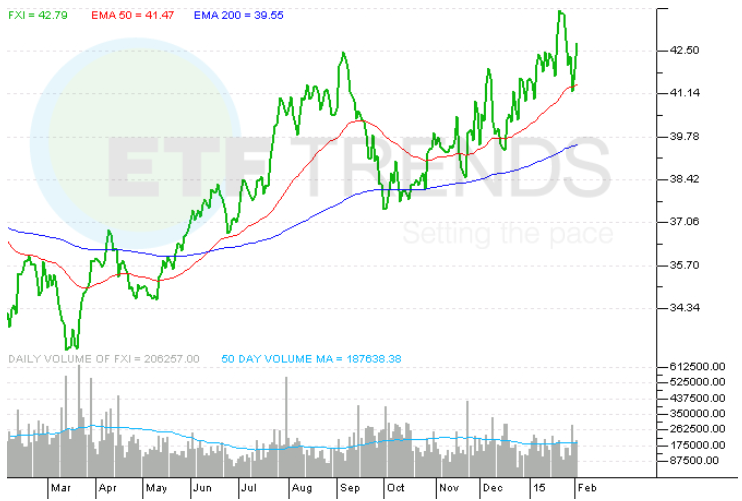Exploring No Man s Land ETFs
Post on: 22 Май, 2015 No Comment

First, the phrase no man’s land ETFs needs to be defined and explained. To be sure, it is not as negative as some might be thinking. Actually, it is not negative at all. However, there are two unfortunate realities in the ETF universe.
Simply put, the largest funds by assets are those that the receive the most attention from the mainstream financial media and many investors. That situation alone is not terrible, but the unnecessary vilification of ETFs with less than $100 million in assets under management, many of which have delivered stellar returns. means many market participants confuse an ETF’s size with its overall investment merit.
What that boils down to is a high school yearbook situation where most popular and most likely to succeed are treated as the same thing. When it comes to ETFs, those with $1 billion or more in AUM are put on a pedestal while the sub-$100 million funds are treated as outcasts. That ignores plenty of compelling opportunities in the middle of those AUM totals.
So for the purposes of this piece, no man’s land ETFs are those funds that have more than $200 million but less than $750 million in AUM. The other criteria is simple: The ETFs featured here simply do not attract much attention, but their returns are impressive.
PowerShares Dynamic Large Cap Value Portfolio (NYSE: PWV ) Size and volume are not the issues with the PowerShares Dynamic Large Cap Value Portfolio as the ETF has nearly $533 million in assets under management and average daily turnover of almost 108,000 shares. A guess, and that is all it is, regarding why PWV does not command much attention is that there are plenty of large-cap ETFs on the market today that are framed as value plays.
On reason might be is that PWV looks a lot like with a Dow Jones Industrial Average ETF with 14 members of the blue-chip index among its lineup. The reality is since PWV debuted in March 2005, it has outpaced the SPDR Dow Jones Industrial Average ETF (NYSE: DIA ) by about 2,400 basis points.
Add to that, over the past three years PWV’s underlying index has outperformed the S&P 500, the S&P 500 Value Index and the Russell 1000 Value Index, according to PowerShares data .
First Trust Financials AlphaDEX Fund (NYSE: FXO ) The First Trust Financials AlphaDEX Fund does not have a volume problem with average daily trade of 173,500 shares, but even with $242.2 million in AUM, the ETF is in no man’s land when it comes to financial services ETFs. That AUM total is enough to keep the critics at bay, but it is just a fraction of the $11.4 billion found with the Financial Select Sector SPDR (NYSE: XLF ).
Investors should note there are critical differences between FXO and XLF. Most notably, XLF is a cap-weighted ETF heavy on bank stocks. XLF’s largest holding, J.P. Morgan Chase (NYSE: JPM ), accounts for 8.6 percent of that ETF’s weight. With FXO, investors get an ETF that does feature bank stocks, but insurance providers and REITs combine for 48 percent of the ETF’s weight.
FXO’s largest holding is Leucadia National (NYSE: LUK ) at a weight of just 1.48 percent. J.P. Morgan does not even account for 0.85 percent of FXO’s weight. Add to that, FXO has a three-year standard deviation that is well below that of the S&P 500 Financials Index with a higher Sharpe Ratio than that index and a beta of just 0.82, according to First Trust data .
Market Vectors Biotech ETF (NYSE: BBH ) To be fair, the Market Vectors Biotech ETF does not toil in complete obscurity and that has to do with investors scurrying to biotech ETFs over the past 12 to 18 months. BBH is merely unheralded relative to the iShares Nasdaq Biotechnology Index Fund (NASDAQ: IBB ) and the SPDR S&P Biotechnology ETF (NYSE: XBI ).
Those are two good ETFs. In the past year, IBB and XBI are both up about 30 percent. Year-to-date, they are each up about 14 percent. If BBH did not exist, those returns for IBB and XBI would be stellar, but BBH does exist and despite the fact that it has just $204.8 million in AUM, it has topped its larger rivals.
Over the past year, BBH is up 46.5 percent, though it has performed inline with IBB and XBI year-to-date. This is another example of a sector ETF where investors should ensure they know exactly what they are getting before clicking the buy button. That is not a knock, but BBH is a concentrated ETF. Home to just 26 stocks (IBB has 120 holdings), BBH devotes nearly 34 percent of its weight to Amgen (NASDAQ: AMGN ), Gilead (NASDAQ: GILD ) and Celgene (NYSE: CELG ).
For more on ETFs, click here .
(c) 2013 Benzinga.com. Benzinga does not provide investment advice. All rights reserved.
Profit with More New & Research. Gain access to a streaming platform with all the information you need to invest better today. Click here to start your 14 Day Trial of Benzinga Professional














